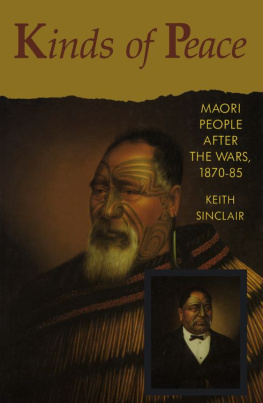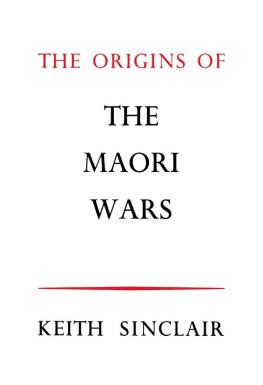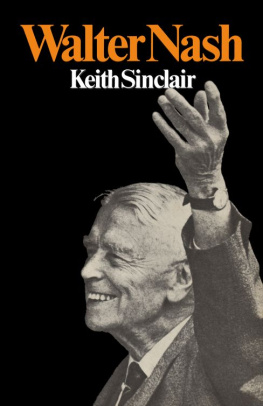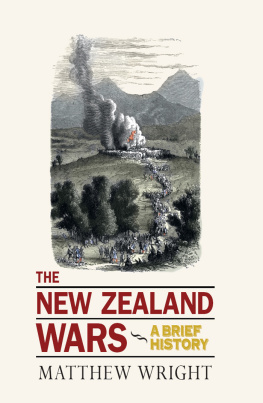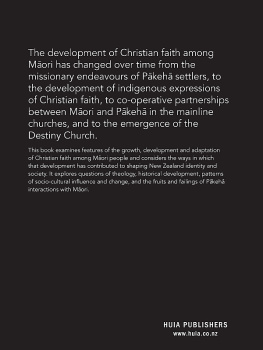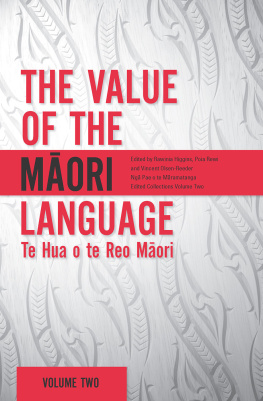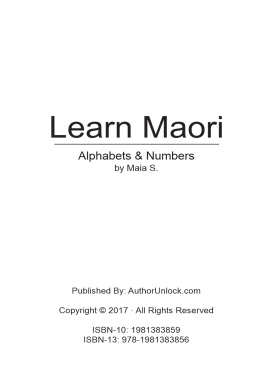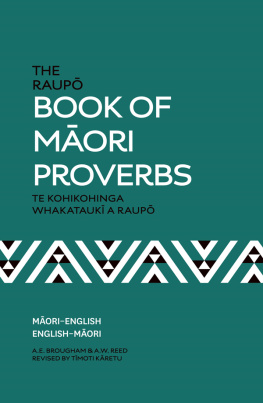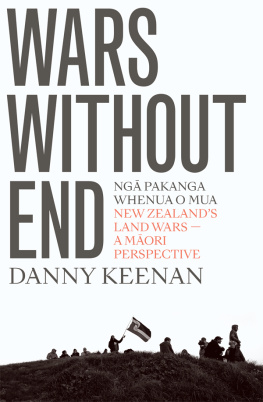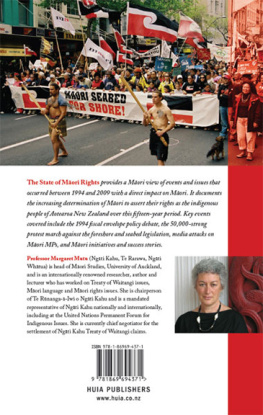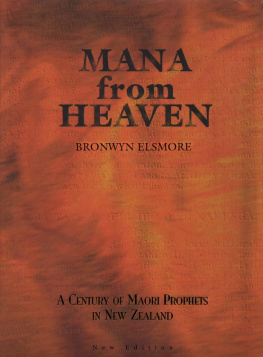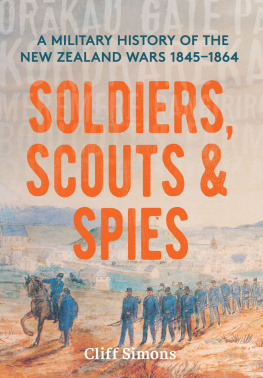This book is about the aftermath of the Anglo-Maori wars, as far as the Maori were concerned. Aftermath used to mean the second mowing of the crop of grass following the early summer mowing. In New Zealand the first mower was the Grim Reaper; the second was the Law: land courts, commissions and confiscations.
This study is not only about the lives of the Maoris who fought against the British. About half the Maori people were neutral (kupapa) or friendlies, a name which at first meant that they fought for the Queen, but the two terms became interchangeable. Some fought for the Queen. Some tribes and hapuu made considered calculations about where their best interests lay. Some fought for reasons of Maori politics. For instance the Arawa wanted revenge against their enemies to the north and south. Some Maori groups changed sides during the fighting.
Some Maori radicals regard the kupapa as Uncle Toms, but many of the best-known Maori leaders were neutral or friendly. They have been almost written out of our history. They are now written back. It has been said that all ages are equidistant from God. So are all the people and parties of the past. Looking at this issue from another direction, I do not think that historians should often see themselves as judges; they should try to understand rather than to pronounce upon innocence or guilt.
Little is said about the South Island Maori and the North Auckland Maori, who played little or no part in the wars and lived well away from the fighting. The Kai Tahu and most of the Ngaa Puhi, like the Arawa and the Ngaati Whatua, never fought the British as groups, though some individuals did. Ngaa Puhi assumed a leadership role in the Kotahitanga movement in the later 1880s and 1890s, outside the scope of this study.
When I began research into the history of race relations in New Zealand, just after World War II, and for nearly ten years thereafter, for an M.A. thesis and then a Ph.D. dissertation, there was very little published literature on that subject. Since then a number of valuable books and theses on nineteenth-century race relations have been published. Some of these, listed in the bibliography, discuss aspects of the history of the 1870s and 1880s, but none has the same focus as the present work. Alan Ward wrote about law, order and government, as they affected the Maori. Ann Parsonsons thesis about the Kingitanga focuses upon the relations between the Waikato and Ngaati Maniapoto tribes; Hazel Riseborough writes well about government policy towards Te Whiti, but eschews analysing his teachings. Like Bronwyn Elsmore, Judith Binney has written about Maori prophets in general. Binney has also written about Rua in particular. Claudia Orange examined the origins and reception of the Treaty of Waitangi. Sharron Mary Cole wrote a useful thesis on the Repudiation movement, but did not make use of the Maori language sources, which makes her viewpoint rather different from mine.
Despite the growth of the historical literature, some important aspects have still been neglected. The kupapa are largely ignored in our general histories. There is virtually nothing published about the Maori committees of the period or about the early Maori Members of the two Houses of Parliament. Almost nothing has been published about Tawhiao and there is only one article about the teachings of Te Whiti and Tohu. The Repudiation movement receives only brief mention in the published literature. All of those topics, among others, are addressed here.
Although I have studied a wide variety of sources, both in England and in New Zealand, my principal source has been the very large number of Maori letters and other documents held in our archives and libraries. There are literally thousands of such documents, from about 1850 to 1900, mostly untranslated, in public collections. No such source is available for the study of, say, South African, Canadian or Australian indigenous people. Comment upon Maori literacy may be found in Chapter 2. Perhaps needless to say, I have only referred to a fraction of these letters, though many hundreds in total, mainly in the period 187085. Much similar work remains to be done by future scholars, hopefully some of them Maori.
I have only a modest reading knowledge of the Maori language, and certainly do not have the expertise to cope with, for instance, the obscure and difficult pronouncements of the prophets. My method has been to make a preliminary reading of letters and invite graduates in Maori and other Maori scholars to provide me with full translations or prcis of letters and documents selected by myself. My indebtedness to these friends is acknowledged later. In addition there are large numbers of Maori letters with contemporary translations, mainly to be found in government publications such as the AppendicestotheJournalsoftheHouseofRepresentatives and in National Archives. I had constantly to refer to the Maori texts myself as I worked, but have rarely relied on my own translations. My contribution was not in language but, I hope, in my knowledge of the historical background and circumstances relating to the documents, so that I have helped to make their meaning more clear.
Some people have recently supposed that Maori history can only emerge from oral traditions, but this seems far from correct. Oral history has a shallow time depth no one can have personal memories going back beyond, say, 1910. Tradition, handed down from ancestors, has little to do with the concerns of historical study, for instance for chronology and accuracy of detail about events. Tradition, while a rich source of valuable data, is more concerned with validating present behaviour than with establishing what actually happened in the past; concerned with what people believe happened, or wish to have happened. It can illumine documentary evidence, but not replace it, where it exists.
This monograph has no thesis, in the sense of a central argument, except to say that Maori reactions to the wars varied greatly. I am trying to describe an exceedingly complex society in a time of rapid change caught, as it were, by a camera in mid-flight.
I have tried to describe, I believe, as much as analyse. But there is a central fact the Maori were undergoing the experience of being colonised, being absorbed into the British empire and into the New Zealand colony. We have only to imagine how modern New Zealanders would feel if we were quite suddenly invaded and subjugated by several million alien people, to sympathise with, to empathise with, the Maori in their brave efforts to cope with rapid, uninvited and sometimes intolerable change.
There remains the pleasant duty of thanking people who helped me. I am greatly indebted to Mrs Jenifer Curnow and Dr Michael Shirres for translating very many Maori documents. My son, Stephen Sinclair, translated large numbers of Maori documents while working, some years ago, for the New Zealand Archives in Wellington, and a few documents for me later. Professor Bruce Biggs generously and voluntarily translated some of Tawhiaos panui (proclamations) and other documents for me, as well as giving frequent good advice on Maori historical issues over many years. All the translators are scholars in the field of nineteenth-century Maori documents. Modern translators are acknowledged in footnotes. Usually I did not know the names of nineteenth-century translators.
The late Patrick Smyth, Bruce Biggs, Anne Salmond, Merimeri Penfold, Pat Hohepa and Robert Mahuta deserve my warmest thanks for lecturing to or tutoring the classes I attended in Maori language, and greatly enjoyed.
Mrs Rachael Ngeungeu Te Irirangi Zister, C.B.E., J.P ., kindly provided a photograph and useful information about her grand-uncle, Wiremu Te Wheoro. Mrs Dorothy Ropiha, B.A ., generously gave me a photograph and valuable information about Henare Matua.

